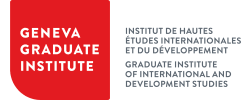HUD - The Future of Humanitarian Design
.jpg)
Humanitarianism is in trouble.
The crises it addresses are now more complex, protracted, and politicised. But political forces are increasingly unsympathetic, failing to adequately support humanitarian actors. Within this context, humanitarianism is undergoing a dramatic shift as it accelerates the integration of technology and ʻdesignʼ practices into its work. This also faces difficulties. The integration of – for instance – machine learning techniques into humanitarian action is criticised for further distancing humanitarians from beneficiaries, reducing human beings to data-points, simply pixels on a satellite image. Equally, partnerships with commercial actors to improve – say – the architectural design of refugee shelters are criticised for subjecting humanitarianism to market logics. Nonetheless, humanitarian design is here to stay, especially as a tactic for mitigating the socio-political challenges the field faces.
The demand of the day is thus simple: to excavate a series of hidden – critical yet pragmatic, speculative yet functional – futures for humanitarian design. Getting there requires a transformation of how we think about the interconnected challenges facing humanitarianism, development, and peace-building globally. Planetary conditions are radically shifting, transforming the relationship between humans, technology, nature, and politics, requiring we think differently about humanitarianism and its design. More, the politicized history of humanitarian action and development demands a deep sensitivity to colonial legacies, global economic exploitation, and related power structures. HUD nurtures a collaborative ecosystem that faces these challenges from the ground, making small steps towards a different future for humanitarian design.
3 main thematic focal points
- Prisons
- Camps
- Compounds
In 2 key humanitarian contexts
- Colombia
- DR Congo
Visit the HUD website for full details.




As leader of the EPFL EssentialTech’s Humanitarian Division, Greg works at the interface of research and humanitarian action. He is leading several large-scale partnerships between EPFL and the ICRC (Engineering for Humanitarian Action), the UNHCR (The Geneva Technical Hub) and the Graduate Institute (The Future of Humanitarian Design). He is also developing executive trainings for humanitarian practitioners on the responsible use of technology in humanitarian setting, as well as about cybersecurity in the sector. Prior to working at EssentialTech, he led the Innovation Coordination at MSF (Doctors Without Borders) Switzerland, aimed at harnessing the power of medical, humanitarian and digital innovations to meet the needs of patients and others affected by disasters. He previously worked several years as a manager for the International Committee of the Red Cross (ICRC) in various regions affected by armed conflicts (Afghanistan, Colombia, Central African Republic, Cote d'Ivoire) and later as Deputy Director for the Antenna Foundation, an NGO that incubates innovative solutions to meet the basic needs of people living in poverty. He is the co-founder and current President of the Board of Watalux SA, a social startup developing innovation for safe water and better hygiene in hospitals, and Board Member of SwissSolidarity, a leading Swiss philanthropic foundation. He holds a PhD in Life Science from the University of Lausanne (Switzerland).



Rachel joined the Centre in 2023 as Senior Researcher & Programme Manager for the Future of Humanitarian Design project (HUD). Originally an engineer by training, Rachel has a decade of experience working in sub-Saharan Africa (Somaliland, Kenya, Rwanda, Uganda, Tanzania, Ghana, Nigeria) for startups, NGOs and as co-founder of a tech startup. Her research interests are in low resource/frugal innovation, understanding users and their role in design/product development and the role of the private sector in sustainable development. Rachel did her PhD at Delft University of Technology where she conducted research on frugal innovations in the water and energy sectors in East Africa.

Integrated Settlement Planning





